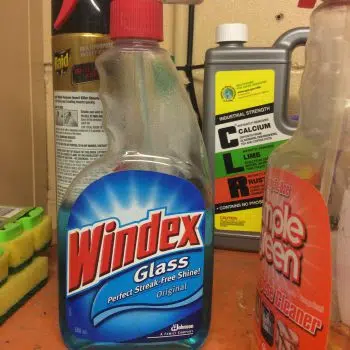What is required to manage the risks associated with hazardous chemicals?
Common Hazardous Substance
Many industrial, agricultural and medical organisations use hazardous substances. The degree of hazard depends on the concentration of the chemical.Common hazardous substances in the workplace include:
- acids
- caustic substances
- disinfectants
- glues
- heavy metals, including mercury, lead, cadmium and aluminium
- paint
- pesticides
- petroleum products
- solvents.
Possible Side Effects of Exposure To Hazardous Substances
Health effects depend on the type of hazardous substance and the level of exposure (concentration and duration). A hazardous substance can be inhaled, splashed onto the skin or eyes, or swallowed.
Some of the possible health effects can include:
- poisoning
- nausea and vomiting
- headache
- skin rashes, such as dermatitis
- chemical burns
- birth defects
- disorders of the lung, kidney or liver
- nervous system disorders.
Responsibility
As the owner of a business you have a requirement to manage the risks associated with hazardous chemicals in the workplace using the following process:
- Identify hazards—find out what could cause harm
- Assess risks, if necessary—understand the nature of the harm that could be caused by the hazard, how serious the harm could be and the likelihood of it happening. This step may not be necessary if you are dealing with a known risk with known controls
- Eliminate risks so far as is reasonably practicable
- Control risks—if it is not reasonably practicable to eliminate the risk, implement the most effective control measures that are reasonably practicable in the circumstances in accordance with the hierarchy of control measures, and ensure they remain effective over time
- Review control measures to ensure they are working as planned.
Hierarchy of Control Measures
The WHS Regulation requires duty holders to work through the hierarchy of control measures which ranks control measures from the highest level of protection and reliability to the lowest.
You must, so far as is reasonably practicable:
- first, eliminate risks by eliminating hazards; this is the most effective control measure
- then substitute hazards with something safer, isolate hazards from people and/or use engineering controls to minimise any risks that have not been eliminated
- then use administrative controls to minimise any remaining risks, and
- then use personal protective equipment (PPE) to minimise any risks that remain.
The control measures you apply may change the way work is carried out. In these situations, you must consult your workers and develop safe work procedures, and provide your workers with training, instruction, information and supervision on the changes.
Prohibited and Restricted Hazardous Chemicals
The WHS Regulation prohibits or restricts the use, storage or handling of certain hazardous chemicals in certain situations. For example, substances containing arsenic must not be used in spray painting or abrasive blasting, while several carcinogens such as 4-nitrodiphenyls are prohibited from all uses except for genuine research or analysis authorised by the regulator. Certain chemicals can be used, handled or stored in the workplace after receiving approval from the regulator. Schedule 10 of the WHS Regulation provides further information on the hazardous chemicals that are restricted or prohibited for use (see Appendix C of this Code).
Identifying Chemicals
The first step in managing risks involves identifying all the chemicals that are or are likely to be used,handled, stored or generated at your workplace in consultation with workers. The identity of chemicals in the workplace can usually be determined by looking at the label and safety data sheet(SDS). In some cases, a chemical may not have a label or an SDS, for example where fumes are generated in the workplace from an activity such as welding.
Hazardous Chemicals Generated in the Workplace
Some workplace processes will produce hazardous chemicals as by-products or waste. These hazards may not be easily identified when generated at the workplace, for example, hydrogen sulphide in a sewer or diesel exhaust fume from truck engines.
Information on by-products is not always available on the SDS. You should find out what hazardous chemicals may be produced from work activities, for example:
- use of welding rods may liberate toxic fumes and vapours
- grinding metals may release toxic metal dust or fumes
- off-gassing of solvent vapours from glues used to manufacture timber products such as Medium Density Fibreboard (MDF)
- dust released from machining timbers are hazardous to health or can present a dust explosion risk.
Register of Hazardous Chemicals
You must ensure that a register of hazardous chemicals is kept up to date and readily accessible to workers and others involved in using, handling or storing hazardous chemicals and affected by a hazardous chemical at the workplace.
The register is a list of the product names of all hazardous chemicals used, handled or stored at the workplace accompanied by the current SDS for each hazardous chemical listed. It must be updated as new hazardous chemicals are introduced to the workplace or when the use of a hazardous chemical is discontinued.
More information about hazardous chemical registers can be found in the Hazardous Chemical Register Fact Sheet.
